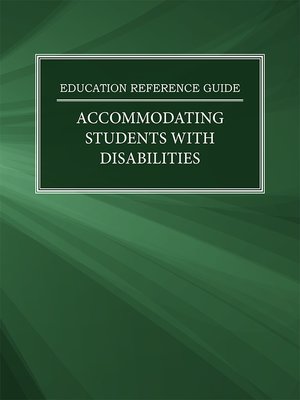Education Reference Guide: Accomodating Students with Disabilities
ebook
By The Editors of Salem Press

Sign up to save your library
With an OverDrive account, you can save your favorite libraries for at-a-glance information about availability. Find out more about OverDrive accounts.
Find this title in Libby, the library reading app by OverDrive.



Search for a digital library with this title
Title found at these libraries:
| Library Name | Distance |
|---|---|
| Loading... |
The collection begins with Maya Eagleton’s overview of the two main categories of student disabilities—low-incidence
and high-incidence. While students with low-incidence disabilities tend to have a higher level of impairment,
children with high-incidence disabilities are harder to assess and therefore may not receive the appropriate interventions.
Eagleton also discusses two models of disability assessment that help to identify students who require
special education services. Cynthia Vejar covers a number of mental illnesses that can affect a student’s academic
performance, including oppositional defiant disorder, conduct disorder, anxiety, depression, Autism, and Asperger
Syndrome. Vejar describes the symptoms of each and offers teaching techniques and strategies that can help accommodate
these students’ particular needs. The following article describes the impact of the Individuals with Disabilities
Education Act and the different points of view on the benefits of mainstreaming students with physical disabilities.







